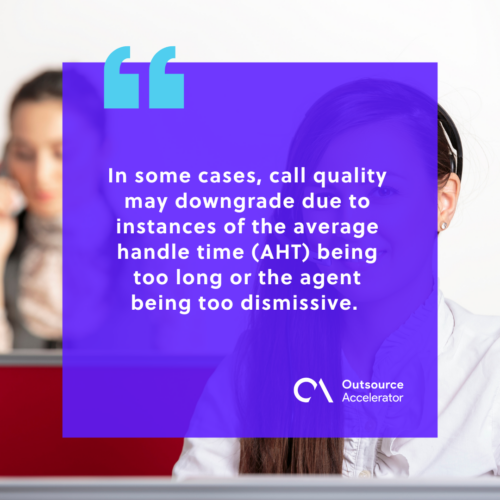Speech analytics
Definition
What is speech analytics?
In contact centers, speech analytics refers to the process of recording inbound and outbound calls and analyzing them. One reason to adopt this technology is to improve efficiency in the workplace.
The technology uses artificial intelligence to recognize keywords, phrases, and even emotions in customers. In turn, the technology provides information and data that can be used to assist customers, clients, and agents alike.
Without speech analytics, contact center managers need to manually listen and evaluate the calls that agents make on a regular basis. Quality assurance (QA) specialists would have to comb through hours of calls to point out the areas of improvement.
By using this technology, managers and QA specialists can focus on the rest of their workload.

2 types of speech analytics
There are two main types of speech analytics depending on when and how they’re done. These can be used exclusively or in conjunction with each other to further enhance efficiency.
Post-call analytics
As the name suggests, post-call speech analytics happens after a call has concluded. The technology will examine the recording for any keywords, voice inflections, and patterns.
Contact centers use post-call analysis on a large batch of calls, whether inbound or outbound, to exhaust their efficiency. By doing so, QA specialists and team leaders can easily pinpoint areas of improvement and non-compliance.
For instance, if an agent on a telemarketing campaign actively disregards the call flow on their telemarketing script, the technology can detect this and tag it as non-compliance.
Real-time analytics
Businesses also use real-time speech analytics to ensure that their agents are following the call center’s standard operating procedures and best practices. With this, QA specialists and team leaders can conduct a listening session while the agents are on a call.
This is a common practice with new agents still adjusting to the production floor with other agents. It helps avoid certain issues from escalating as supervisors can easily jump in with the help of real-time analytics detecting signs like negative voice inflections from the customer.
Benefits of using speech analytics
Next-generation technology like speech analytics helps businesses in more ways than one. In today’s modern world, equipping the workforce with this kind of tool is needed and non-negotiable.
Here are the benefits of using speech analytics:
Improved call quality
When both managers and QA specialists can monitor the calls as they happen (or soon afterward), agents will most likely do their best to provide the best service possible.
Call quality has several components that vary from showcasing in-depth product knowledge to being empathetic.
Addressing areas of improvement
In some cases, call quality may downgrade due to instances of the average handle time (AHT) being too long or the agent being too dismissive. With real-time analysis, contact centers can mitigate such issues.
Addressing these problems early on is beneficial for all parties involved. For instance, the agent in question can practice a more empathetic approach, and the management can improve the AHT by implementing best practices.

Ensuring compliance
Likewise, the technology can assist in pointing out agents that are going off the books. This could mean a lot of things, from going off the script to using unprofessional language while on a call.
Managers can call out those who fail to practice basic call handling etiquette and either reprimand them or put them on a development plan.
The technology can pick up certain keywords and phrases that reflect negative emotions such as anger, frustration, and disappointment.
Assisting new agents
New agents can perform better when they know that their managers can aid them in times of need. While speech analytics tools aren’t as active as call monitoring, they could mitigate common issues among new call center agents.
How call centers use speech analytics to improve customer experience
This technology has helped businesses improve customer experience by adopting countermeasures to the issues that show patterns and trends. For instance, connection issues and hold waiting times can be attributed to old systems and outdated technology.
The customer experience (CX) often makes or breaks the company. Negative feedback and comments can affect subsequent sales and public image. This is the reason why businesses spend time, money, and effort into acquiring tools that help them achieve their company’s vision.







 Independent
Independent




